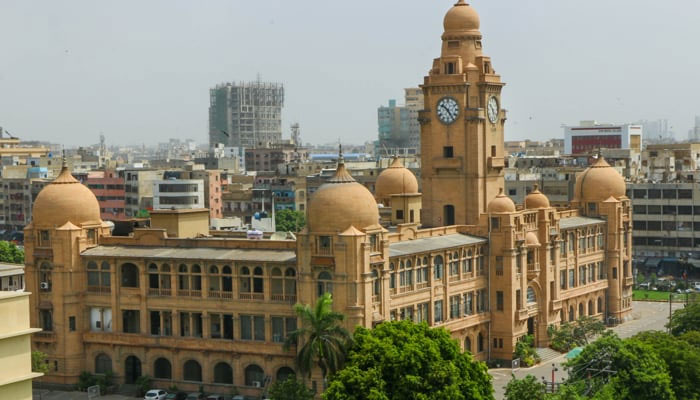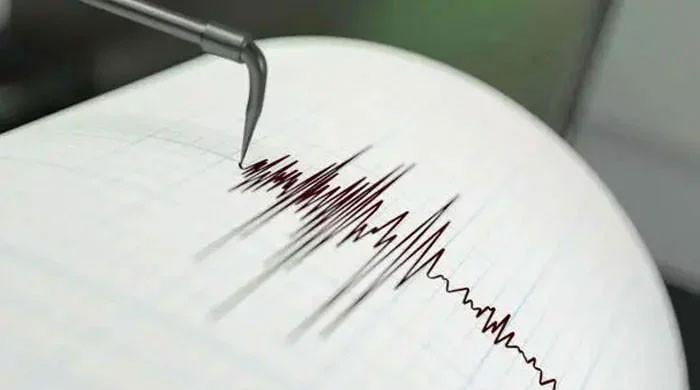Will financial situation of new city govt in Karachi allow it to function?
Karachi went to LG polls last Sunday, after which financial, administrative powers of elected KMC city council came under question
January 19, 2023

- Financial, administrative powers of elected KMC city council in question.
- KMC city council’s structure to undergo some changes.
- Each TMC will have its separate elected council.
After a long, chaotic hiatus, Karachi went to local government elections this past Sunday. Now the million-dollar question that has sprung up again is about the financial and administrative powers of the elected Karachi Metropolitan Corporation’s (KMC) city council.
During the month of June 2022, the Federal Board of Revenue’s Large Taxpayers Office (LTO), Karachi, surpassed the budgetary target fixed by the government at Rs170 billion by collecting a massive Rs196 billion. The LTO collected Rs146 billion excess amount, as it was assigned the target of Rs1.449 trillion for the fiscal year 2021-2022.
This time around, the KMC city council’s structure will undergo some changes, while the number of districts has also increased from six to seven. Moreover, the districts have been divided, in terms of authority and elections, into 25 town municipal corporations (TMCs), which further comprise different numbers of union committees (UCs).
Each TMC will have its separate elected council, which means that the city will have 25 TMCs’ elected councils, as opposed to the previous LG, in which it had six district municipal corporations’ (DMCs) elected councils.
The Sindh Local Government Act (SLGA), 2013, and its amendments in 2021 talk about the financial powers of the KMC’s city council. Section 96 of the SLGA 2013, talks about taxes to be levied.
The section, however, was amended in 2021, and now it states that where a tax, toll or fee is to be collected by the metropolitan corporation or municipal corporation and a TMC, the TMC will not levy such tax, toll or fee.
The Act said the metropolitan corporation will give a share of the taxes, rates, tolls or fees collected by it to the TMC in such proportion as maybe determined by the government. Schedule V of the LG Act talks about the taxes, rates, tolls and fees that are levied by the KMC. According to it, there is a fire tax, conservancy tax, drainage tax, fees on slaughtering animals, fees on conversion of land use all over the city, fees on licences, sanctions and permits granted by the KMC.
There are also market fees on land owned by the KMC, tolls on roads and bridges owned and maintained by the KMC, charged parking on the roads maintained by the KMC, tax on the installation of base transceiver station (BTS) towers, entertainment tax, advertisement tax from roads, bridges, underpasses etc., being maintained by the KMC, fire and building safety inspection fees, tax on marriage halls, clubs and cess on any taxes levied by the government.
Former city mayor Wasim Akhtar had earlier explained to The News that there is a fee on the conversion of land use all over the city, which is collected by the Sindh Building Control Authority (SBCA) but not shared with the KMC.
He mentioned that tolls on roads and bridges owned and maintained by the KMC cannot be collected by the corporation because the Sindh Transport Department does that. The former mayor lamented that BTS towers’ tax collection is done by the SBCA, and the entertainment tax is collected by the excise department of the provincial government. As for the cess, he had said the provincial government never gives the city council its due share.
There is an amount after tax collection that the federal government issues to the provinces, and the provinces are supposed to disburse that amount to the district and local governments through the Provincial Finance Commission (PFC). Since 2007, the PFC has not been issued to the LGs in Sindh.
It is mentioned in Chapter 12 of the SLGA 2013’s Section 3 that the PFC “may, before making recommendations, consult anybody or a person, and shall take into account the principles of population, backwardness, need and performance of a council”.
In the same Act, it has been laid down that the mayor of a metropolitan corporation and the chairman of a district council will be members of the PFC, along with the finance and LG ministers, and the finance and LG secretaries, two members of the provincial assembly and others. According to a 2007 notification from the Sindh Finance Department, the formula for the distribution of the PFC among the districts is on the basis of the 40 per cent of the district or town’s population, 35 per cent of its infrastructure, 10 per cent of its development needs, five per cent of its area and 10 per cent of its performance indicator, which means the revenue it has collected.
Speaking to The News earlier, the Muttahida Qaumi Movement-Pakistan's (MQM-P) Muhammad Hussain had explained that the Pakistan Peoples Party-led provincial government had never issued the PFC to the city government despite its mention in the SLGA 2013. He had said they want the PFC to be an independent body that distributed provincial funds adequately.
As for the Octroi Zila Tax (OZT), there is no mention of it in the SLGA 2013 or the SLGA 2021. The OZT is a tax that the federal government collects from the goods that enter or exit the premises of the city for the purpose of trade. The federal government collects it, and then transfers the proceeds to the provincial government.
The Sindh government never disbursed the due share of the OZT to the city government, according to Akhtar. He had said the provincial government was supposed to pay some Rs60 billion to the KMC and the DMCs in terms of their OZT share. Every year, there was a 15 per cent increase in the OZT collection that the provincial government never gave to the KMC and DMCs, he pointed out.
Originally published in The News











